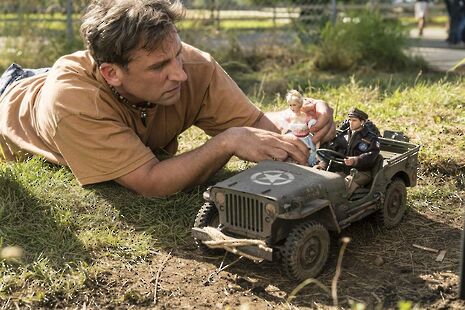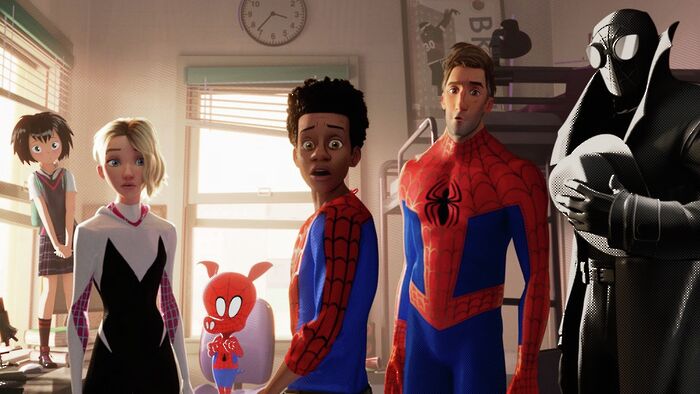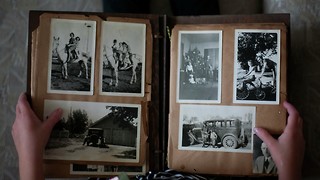Welcome to Marwen misfires
Preferring the documentary Marwencol, Vee Thames questions the sensitivity of this cinematic portrait of a troubled artist

Directed by Robert Zemeckis
Starring Steve Carell, Leslie Mann, Diane Kruger
Released 1 January
Inspired by Jeff Malmberg’s 2010 documentary Marwencol, Robert Zemeckis’s latest film Welcome to Marwen tells the true story of Mark Hogancamp (Steve Carell), an artist turned photographer and victim to a brutal assault which leaves him brain-damaged and afflicted with PTSD. As a coping mechanism, he constructs a miniature fictional Belgian town called Marwen.
Much like Hogancamp himself, the story is straddled between the real world and the world of imagination as we flit between live-action scenes of Hogancamp’s day-to-day life, and animated sequences set in Marwen. Visually, the film is impressive: the facial resemblance and detail of each actor’s face on these dolls is quite remarkable. It is the quality of the motion capture technology that shines in this film and the hyper-realistic imaging marks a departure from the more stylised facial animation found in Zemeckis’s earlier works such as The Polar Express. However, these achievements are not surprising. After all, Zemeckis is a director of great experience with a unique visual style and appetite for narrative structures which go against the status quo.
I just wish Zemeckis paid the same amount of care and attention to the plot and character development – he has done so before with memorable creations such as Marty McFly in the Back to the Future trilogy and Roger Rabbit in Who Framed Roger Rabbit while many of Welcome to Marwen’s female characters fall flat, only serving to prop up Hogancamp’s narrative by being assigned as carers and/or potential wives. Despite a cast of talented actresses including Leslie Mann, Diane Kruger and Gwendoline Christie, they were unable to save these thin auxiliary roles. Dramaturgically it doesn’t fare much better either; plotlines are dropped such as Hogancamp’s ongoing battle with abusive self-medication, not giving events in his life their proper dramatic weight and in many instances not reaching a proper conclusion.
Hogancamp’s story is an account the healing power of art, the expression of sexuality and tolerance – specifically the tolerance of fetishism. While Hogancamp’s sexuality isn’t made explicit in the film, it is evident that his vast collection of women’s shoes and dolls are viewed as ‘queer’ in eyes of his assailants and provoke them to violence. Conversely, we see that this does not cause harm or distress to anyone and is in fact another way of connecting with women he cares about; each pair of shoes, in Hogancamp’s words, represent a woman’s “essence”.
Unfortunately it appears that Hogancamp’s story isn’t one that Zemeckis’s film really tells or is interested in sharing with its viewers. Rather than depict his physical and psychological recovery after a brutal assault and chart his journey into photography, Zemeckis embellishes his story with secondary conflicts between Hogancamp and the boyfriend of his love interest (Neil Jackson) and almost self-congratulating references to his previous projects – one particular Back to the Future Easter Egg which becomes a key plot device is particularly startling. Where Welcome to Marwen should have been intimate and emotionally engaging, it was loud, shallow, and unfocused.
Steve Carell’s leading performance is brave and worthy of praise, and one where his chameleon-like ability lends itself to depicting Hogancamp’s PTSD and limited motor function with sensitivity, but even Carell’s talents are unable to mask Welcome to Marwen’s many flaws. If you are interested in finding out more about Mark Hogencamp’s life and work, I would suggest giving this film a miss and watch Jeff Malmberg’s under-appreciated documentary Marwencol instead. It offers a much more sensitive and informative treatment about this extraordinary individual, the power of art, and is a far more fitting tribute to Mark Hogancamp than Welcome to Marwen ever will be
 Interviews / You don’t need to peak at Cambridge, says Robin Harding31 December 2025
Interviews / You don’t need to peak at Cambridge, says Robin Harding31 December 2025 Comment / What happened to men at Cambridge?31 December 2025
Comment / What happened to men at Cambridge?31 December 2025 News / Unions protest handling of redundancies at Epidemiology Unit30 December 2025
News / Unions protest handling of redundancies at Epidemiology Unit30 December 2025 News / Varsity’s biggest stories of 202531 December 2025
News / Varsity’s biggest stories of 202531 December 2025 News / Downing investigates ‘mysterious’ underground burial vault 29 December 2025
News / Downing investigates ‘mysterious’ underground burial vault 29 December 2025










